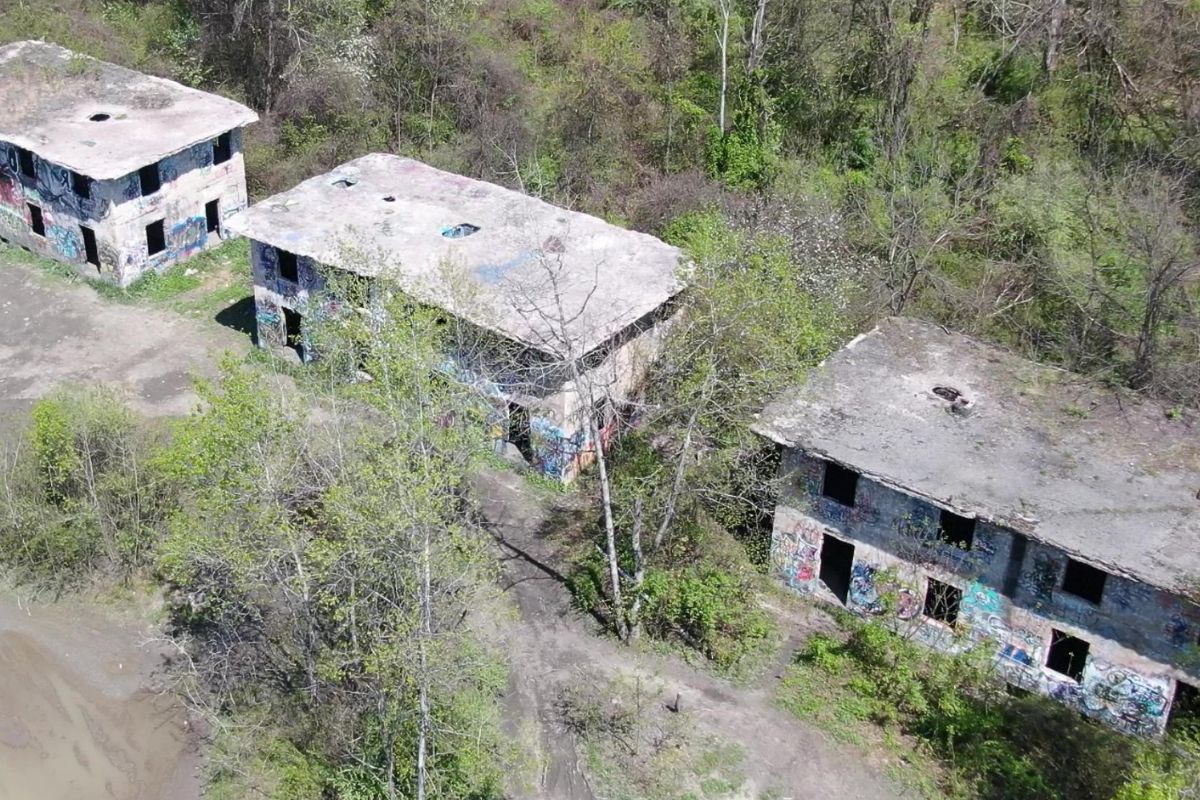Pennsylvania’s Forgotten Concrete City Experiment In Worker Housing

Have you ever heard of Concrete City in Pennsylvania? This hidden gem is a fascinating piece of history tucked away in the small town of Nanticoke. Built in 1911 by the Delaware, Lackawanna, and Western Railroad, it was an ambitious project aimed at providing housing for coal workers. The idea was to create a community with modern amenities, but it didn't quite go as planned. The concrete structures were sturdy, yet the lack of indoor plumbing and heating made life challenging. Eventually, the site was abandoned in 1924. Today, Concrete City stands as a haunting reminder of early 20th-century industrial life. Visitors can wander through the ruins, imagining what life might have been like for those who called this place home. Whether you're a history buff or just curious about unique places, Concrete City offers a glimpse into a past experiment in worker housing.
The Origins of Concrete City
In the early 1900s, the Delaware, Lackawanna & Western Railroad company embarked on an ambitious project to create a model community for its workers. This experiment aimed to provide affordable, durable housing using concrete, a novel material at the time. Let's explore the remnants of this forgotten city.
- Nanticoke, Pennsylvania
Nestled in Luzerne County, Nanticoke is where Concrete City was born. This small town was chosen for its proximity to the coal mines, making it convenient for workers. Today, visitors can still see the remains of this once-bustling community.
The Unique Architecture of Concrete City
Concrete City was designed with a distinct architectural style that set it apart from other worker housing projects. The use of concrete was not only innovative but also intended to be fireproof and low-maintenance. Let's take a closer look at some of the unique structures.
- The Concrete Houses
Each house in Concrete City was identical, featuring a two-story design with a flat roof. These homes were built in a U-shape around a central courtyard, fostering a sense of community among residents. Although weathered, the structures still stand as a testament to early 20th-century innovation.
The Community Life in Concrete City
Life in Concrete City was designed to be communal, with shared spaces and amenities for the workers and their families. This setup aimed to improve the quality of life and foster camaraderie among residents. Discover what life was like in this unique community.
- The Central Courtyard
At the heart of Concrete City was a large courtyard where residents gathered for social events and activities. This space was vital for community bonding, offering a place for children to play and adults to socialize.
The Decline and Abandonment of Concrete City
Despite its innovative design, Concrete City faced numerous challenges that led to its decline. Issues such as poor drainage and lack of modern amenities made it less appealing over time. Explore the factors that contributed to its abandonment.
- The Drainage Problems
One of the significant issues that plagued Concrete City was inadequate drainage. This problem led to frequent flooding, making living conditions difficult for residents. The lack of a proper sewage system further exacerbated the situation.
The Legacy of Concrete City
Though abandoned, Concrete City remains a fascinating piece of history. Its legacy lives on as a reminder of early 20th-century experimentation in worker housing. Let's uncover what makes this site a unique historical landmark.
- The Historical Significance
Concrete City is now a popular spot for urban explorers and history enthusiasts. Its unique architecture and historical background offer a glimpse into a bygone era of industrial innovation and community planning.
Reflecting on Concrete City's Legacy
Concrete City stands as a fascinating chapter in Pennsylvania's history. Built in 1911 by the Delaware, Lackawanna and Western Railroad as a housing experiment for its workers, it was a bold attempt to create a modern community. However, its abandonment in 1924 due to structural issues and lack of modern amenities highlights the challenges of early 20th-century urban planning. Today, the site serves as a reminder of both the ambitions and limitations of that era. Its sturdy structures, now covered in graffiti, attract urban explorers and history enthusiasts alike. Concrete City offers a unique glimpse into the past, showing how far we've come in terms of housing development and community planning. As we look back, it's clear that while the experiment didn't succeed, it left a lasting impact on the region's architectural and cultural landscape.

